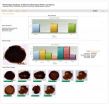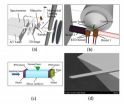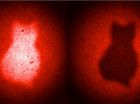(Press-News.org) As technology advances, science has become increasingly about data—how to gather it, organize it, and analyze it. The creation of key databases to analyze and share data lies at the heart of bioinformatics, or the collection, classification, storage, and analysis of biochemical and biological information using computers and software. The tools and methods used in bioinformatics have been instrumental in the development of fields such as molecular genetics and genomics. But, in the plant sciences, bioinformatics and biometrics are employed in all fields—not just genomics—to enable researchers to grapple with the rich and varied data sources at their disposal.
In July 2013, Surangi Punyasena of the University of Illinois at Urbana-Champaign and Selena Smith of the University of Michigan organized a special session at Botany 2013, the annual meeting of the Botanical Society of America in New Orleans, Louisiana. They invited plant morphologists, systematists, and paleobotanists, as well as computer scientists, applied mathematicians, and informaticians—all of whom were united in their interest in developing or applying novel biometric or bioinformatic methods to the form and function of plants. The goal: to provide a forum for a cross-disciplinary exchange of ideas and methods on the theme of the quantitative analysis of plant morphology.
As Punyasena explains, "The quantitative analysis of morphology is the next frontier of bioinformatics. Humans are very good at learning to recognize shape and texture, but there are many problems where accuracy and consistency are difficult to achieve with only expert-derived, qualitative data, and in many fields there are often a limited number of experts trained in these visual assessments."
The results of that session, along with invited papers, are published in the August issue of Applications in Plant Sciences as a special issue on Bioinformatic and Biometric Methods in Plant Morphology. Morphology is, of course, the study of form, and form as represented in this collection of articles has a broad scope—from microscopic pollen grains and charcoal particles, to macroscopic leaves and whole root systems. The methods presented in the issue, both recent and emerging, are varied as well, including automated classification and identification, geometric morphometrics, and skeleton networks, as well as tests of the limits of human assessment.
Three articles in the issue look at the application of biometric and bioinformatic methods in palynology: Han et al. (2014) introduce an online Miocene pollen database with semantic image search capabilities; Holt and Bebbington (2014) test the applications of an automated pollen classifier; and Mander et al. (2014) analyze differences in human and automated classification of grass pollen based on surface textures. Other papers highlight how biometric and bioinformatic methods apply to plants more broadly, including using skeleton networks to examine plant morphology such as roots (Bucksch, 2014), improving the quantification of geometric leaf shape metrics with a new protocol to measure leaf circularity (Krieger, 2014), comparing human and automated methods of quantifying aspects of leaf venation (Green et al., 2014), and applying morphometrics to charcoalified plant remains (Crawford and Belcher, 2014).
Taken as a whole, the issue presents a compelling argument for the importance of both computational and morphometric approaches.
"I think that there's been a renaissance in morphometric approaches," notes Punyasena. "New techniques are using easy access to high-quality digital imaging, powerful computers, and advances in computational analyses like machine learning to rethink the way we gather and analyze morphological data."
As advances in technology allow researchers to gather more and more morphological and image-based data, it has become increasingly important to be able to analyze and interpret those data quickly, accurately, consistently, and objectively. Biometric and bioinformatic methods make this possible, and reveal the potential of data collected from the shape and form of plants to be as rich of a data source as genetic data.
INFORMATION:
Punyasena, S. W., and S. Y. Smith [eds.]. 2014. Bioinformatic and Biometric Methods in Plant Morphology [special issue]. Applications in Plant Sciences 2(8).
Articles in the issue:
Bucksch, A. 2014. A practical introduction to skeletons for the plant sciences. Applications in Plant Sciences 2(8): 1400005. doi:10.3732/apps.1400005.
Crawford, A. J., and C. M. Belcher. 2014. Charcoal morphometry for paleoecological analysis: The effects of fuel type and transportation on morphological parameters. Applications in Plant Sciences 2(8): 1400004. doi:10.3732/apps.1400004.
Green, W. A., S. A. Little, C. A. Price, S. L. Wing, S. Y. Smith, B. Kotrc, and G. Doria. 2014. Reading the leaves: A comparison of leaf rank and automated areole measurement for quantifying aspects of leaf venation. Applications in Plant Sciences 2(8): 1400006. doi:10.3732/apps.1400006.
Han, J. G., H. Cao, A. Barb, S. W. Punyasena, C. Jaramillo, and C.-R. Shyu.2014. A neotropical Miocene pollen database employing image-based search and semantic modeling. Applications in Plant Sciences 2(8): 1400030. doi:10.3732/apps.1400030.
Holt, K. A., and M. S. Bebbington. 2014. Separating morphologically similar pollen types using basic shape features from digital images: A preliminary study. Applications in Plant Sciences 2(8): 1400032. doi:10.3732/apps.1400032.
Krieger, J. D. 2014. A protocol for the creation of useful geometric shape metrics illustrated with a newly derived geometric measure of leaf circularity. Applications in Plant Sciences 2(8): 1400009. doi:10.3732/apps.1400009.
Mander, L., S. J. Baker, C. M. Belcher, D. S. Haselhorst, J. Rodriguez, J. L. Thorn, S. Tiwani, et al. 2014. Accuracy and consistency of grass pollen identification by human analysts using electron micrographs of surface ornamentation. Applications in Plant Sciences 2(8): 1400031. doi:10.3732/apps.1400031.
Applications in Plant Sciences (APPS) is a monthly, peer-reviewed, open access journal focusing on new tools, technologies, and protocols in all areas of the plant sciences. It is published by the Botanical Society of America, a nonprofit membership society with a mission to promote botany, the field of basic science dealing with the study and inquiry into the form, function, development, diversity, reproduction, evolution, and uses of plants and their interactions within the biosphere. APPS is available as part of BioOne's Open Access collection.
For further information, please contact the APPS staff at apps@botany.org.
Together, humans and computers can figure out the plant world
Special issue of Applications in Plant Sciences looks at how researchers are using bioinformatics to understand plant form
2014-08-28
ELSE PRESS RELEASES FROM THIS DATE:
New analytical technology reveals 'nanomechanical' surface traits
2014-08-28
WEST LAFAYETTE, Ind. – A new research platform uses a laser to measure the "nanomechanical" properties of tiny structures undergoing stress and heating, an approach likely to yield insights to improve designs for microelectronics and batteries.
This new technique, called nanomechanical Raman spectroscopy, reveals information about how heating and the surface stress of microscale structures affect their mechanical properties. Researchers have discussed the merits of surface-stress influence on mechanical properties for decades. However, the nanomechanical Raman spectroscopy ...
Sensory-tested drug-delivery vehicle could limit spread of HIV, AIDS
2014-08-28
A unique method for delivering compounds that could positively impact the global battle against HIV and AIDS may be possible, thanks to researchers in Penn State's College of Agricultural Sciences.
A semi-soft vaginal suppository made from the seaweed-derived food ingredient carrageenan and loaded with the antiviral drug Tenofovir provides a woman-initiated, drug-delivery vehicle that can protect against the spread of sexually transmitted infections during unprotected heterosexual intercourse, the researchers said.
With more than 34 million people worldwide living with ...
The Lancet: Respiratory infection controls being used for ebola patients are unnecessary and may contribute to public panic
2014-08-28
Respiratory infection control measures – which have been adopted by most health agencies to deal with the Ebola epidemic in west Africa – are unnecessary, and may heighten panic and fear among the public, according to the authors of a new letter, published in The Lancet, and written by Professor Jose M. Martin-Moreno from the University of Valencia in Spain, and colleagues.
Ebola virus is primarily transmitted through contact with infected patients' blood, vomit, faeces and other secretions, both direct and indirect, from contaminated needles and other materials. This ...
Indoor mold poses health risk to asthma sufferers
2014-08-28
Damp and mould in homes could pose a significant health risk to people with asthma according to a new study published in the Journal of Allergy and Clinical Immunology.
By critically reviewing the findings from 17 studies in eight different countries, the research has found that the presence of several types of mould can lead to breathing problems in asthma sufferers, as well as increasing the likelihood of developing the condition.
The research has been conducted by a team at the University of Exeter Medical School and is the first time all of the information relating ...
Synthesis produces new antibiotic
2014-08-28
HOUSTON – (Aug. 28, 2014) – A fortuitous collaboration at Rice University has led to the total synthesis of a recently discovered natural antibiotic.
The laboratory recreation of a fungus-derived antibiotic, viridicatumtoxin B, may someday help bolster the fight against bacteria that evolve resistance to treatments in hospitals and clinics around the world.
As part of the process, Rice organic chemist K.C. Nicolaou and structural biologist Yousif Shamoo and their colleagues created and tested a number of variants of viridicatumtoxin B that could lead to the simplified ...
Inter-dependent networks stress test
2014-08-28
Energy production systems are good examples of complex systems. Their infrastructure equipment requires ancillary sub-systems structured like a network—including water for cooling, transport to supply fuel, and ICT systems for control and management. Every step in the network chain is interconnected with a wider network and they are all mutually dependent. A team of UK-based scientists has studied various aspects of inter-network dependencies, not previously explored. The findings have been published in EPJ B by Gaihua Fu from Newcastle University, UK, and colleagues. These ...
Quantum physics enables revolutionary imaging method
2014-08-28
This news release is available in German. Researchers from the Institute for Quantum Optics and Quantum Information (IQOQI), the Vienna Center for Quantum Science and Technology (VCQ), and the University of Vienna have developed a fundamentally new quantum imaging technique with strikingly counterintuitive features. For the first time, an image has been obtained without ever detecting the light that was used to illuminate the imaged object, while the light revealing the image never touches the imaged object.
In general, to obtain an image of an object one has to illuminate ...
This is your brain's blood vessels on drugs
2014-08-28
WASHINGTON, Aug. 28, 2014—A new method for measuring and imaging how quickly blood flows in the brain could help doctors and researchers better understand how drug abuse affects the brain, which may aid in improving brain-cancer surgery and tissue engineering, and lead to better treatment options for recovering drug addicts. The new method, developed by a team of researchers from Stony Brook University in New York, USA and the U.S. National Institutes of Health, was published today in The Optical Society's (OSA) open-access journal Biomedical Optics Express.
The researchers ...
Ancient metal workers were not slaves but highly regarded craftsmen
2014-08-28
In 1934, American archaeologist Nelson Glueck named one of the largest known copper production sites of the Levant "Slaves' Hill." This hilltop station, located deep in Israel's Arava Valley, seemed to bear all the marks of an Iron Age slave camp – fiery furnaces, harsh desert conditions, and a massive barrier preventing escape. New evidence uncovered by Tel Aviv University archaeologists, however, overturns this entire narrative.
In the course of ongoing excavations at Timna Valley, Dr. Erez Ben-Yosef and Dr. Lidar Sapir-Hen of TAU's Department of Archaeology and Near ...
Global warming pioneer calls for CO2 to be taken from atmosphere and stored underground
2014-08-28
Wally Broeker, the first person to alert the world to Global Warming, has called for atmospheric CO2 to be captured and stored underground. He says that Carbon Capture, combined with limits on fossil fuel emissions, is the best way to avoid global warming getting out of control over the next fifty years. Professor Broeker (Columbia University, New York) made the call during his presentation to the International Carbon Conference in Reykjavik, Iceland, where 150 scientists are meeting to discuss Carbon Capture and Storage.
He was presenting an analysis which showed that ...
LAST 30 PRESS RELEASES:
When is it time to jump? The boiling frog problem of AI use in physics education
Twitter data reveals partisan divide in understanding why pollen season's getting worse
AI is quick but risky for updating old software
Revolutionizing biosecurity: new multi-omics framework to transform invasive species management
From ancient herb to modern medicine: new review unveils the multi-targeted healing potential of Borago officinalis
Building a global scientific community: Biological Diversity Journal announces dual recruitment of Editorial Board and Youth Editorial Board members
Microbes that break down antibiotics help protect ecosystems under drug pollution
Smart biochar that remembers pollutants offers a new way to clean water and recycle biomass
Rice genes matter more than domestication in shaping plant microbiomes
Ticking time bomb: Some farmers report as many as 70 tick encounters over a 6-month period
Turning garden and crop waste into plastics
Scientists discover ‘platypus galaxies’ in the early universe
Seeing thyroid cancer in a new light: when AI meets label-free imaging in the operating room
Neutrophil-to-lymphocyte ratio may aid risk stratification in depressive disorder
2026 Seismological Society of America Annual Meeting
AI-powered ECG analysis offers promising path for early detection of chronic obstructive pulmonary disease, says Mount Sinai researchers
GIMM uncovers flaws in lab-grown heart cells and paves the way for improved treatments
Cracking the evolutionary code of sleep
Medications could help the aging brain cope with surgery, memory impairment
Back pain linked to worse sleep years later in men over 65, according to study
CDC urges ‘shared decision-making’ on some childhood vaccines; many unclear about what that means
New research finds that an ‘equal treatment’ approach to economic opportunity advertising can backfire
Researchers create shape-shifting, self-navigating microparticles
Science army mobilizes to map US soil microbiome
Researchers develop new tools to turn grain crops into biosensors
Do supervised consumption sites bring increased crime? Study suggests that’s a myth
New mass spec innovation could transform research
Maternal nativity, race, and ethnicity and infant mortality in the US
Migration-related trauma among asylum seekers exposed to the migrant protection protocols
Jupiter’s moon Europa has a seafloor that may be quiet and lifeless
[Press-News.org] Together, humans and computers can figure out the plant worldSpecial issue of Applications in Plant Sciences looks at how researchers are using bioinformatics to understand plant form





